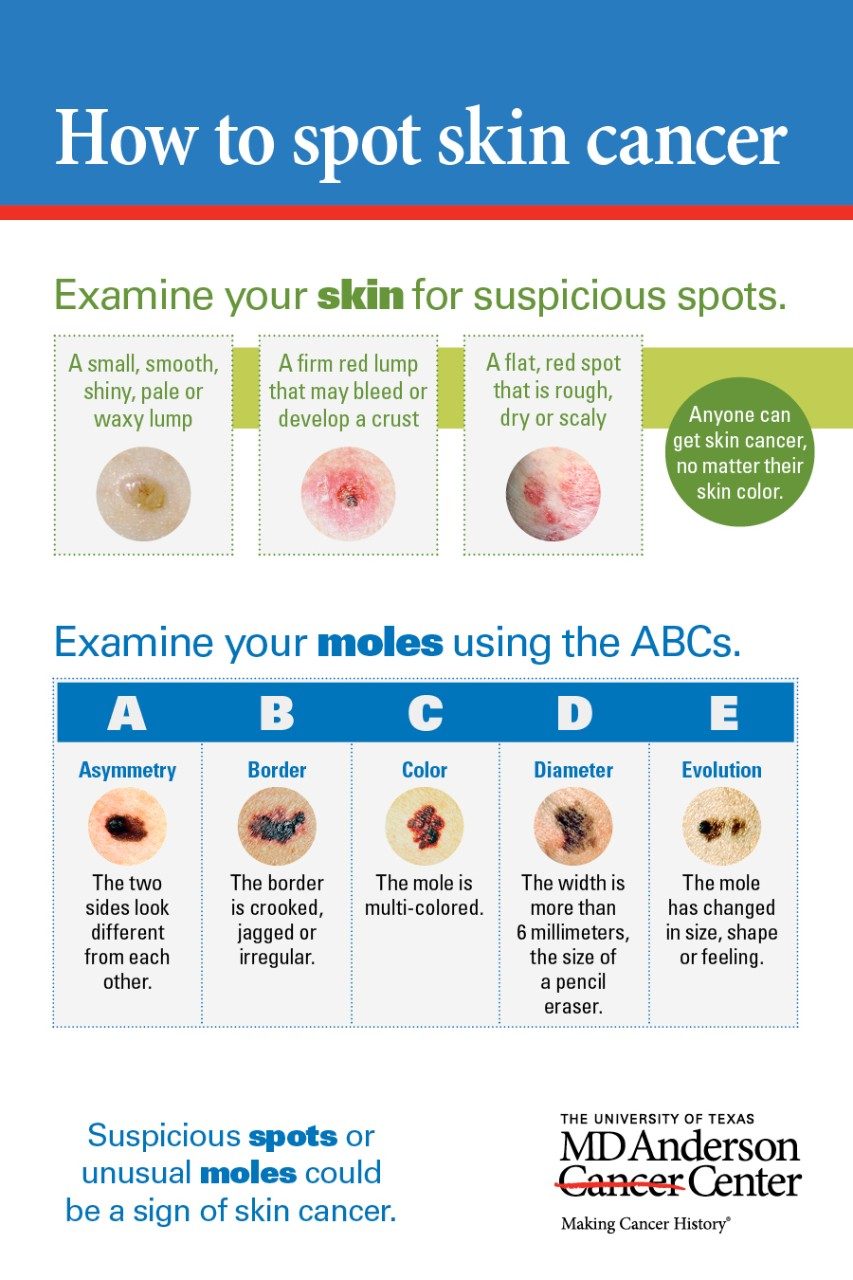How to perform a self-exam for skin cancer
It’s important to know where and how to look for spots that could be melanoma or other types of skin cancer. That’s true no matter how light or dark your skin is.

Who would have thought? That tiny spot in-between your toes could be skin cancer. And you’re thinking, “That’s one of the last places on my body to ever see daylight. How’d that happen?”
Well, most skin cancers are caused by sun exposure — but not all. In fact, skin cancer can occur anywhere on the body.
Most of these are basal and squamous cell cancers, which are the easiest skin cancers to treat. But, a growing number are melanoma, a less common and more aggressive type of skin cancer. Since 1950, new melanoma cases in the United States have increased by 600%.
So, it’s important to know where and how to look for spots that could be melanoma or other types of skin cancer. That’s true no matter how light or dark your skin is.
Here’s what you need to know to protect your skin.
Keep track of spots on all parts of your skin
While using sunscreen is important, keeping track of the spots on your skin also is a must for protecting your skin.
Luckily, more than half of skin cancers occur in areas of the body easily within view.
Basal and squamous cell cancers occur mainly on the parts of your body that have been exposed to the sun, such as your head and neck. The most common locations for melanomas in men are the chest and back. In women, the legs are the most common site.
Pay special attention to these parts when examining your skin, but don’t forget to check less common areas as well.
Unusual places where melanoma and other skin cancers can occur include:
- In-between the toes
- On the soles of feet
- On palms
- In the scalp
- Behind the ears
- In fingernails and toenails
- Between the buttocks
- Around the genital area
So, get familiar with your entire body — and be on the lookout for changes in your skin.
Look for new spots — and changes in existing spots
Be sure to check your skin for changes every month. Learn where your birthmarks, moles and blemishes are, and what they usually look and feel like. You should be familiar with what’s normal for your skin.
Look for new growths, spots, bumps or patches. And, pay attention to sores that don't heal within a couple of months.
Many skin cancers develop from existing moles. Follow the ABCDE guide when examining your moles:
A is for Asymmetry. If both sides of your mole don’t look identical, get it checked by your doctor.
B is for Border. The border around your mole should be smooth and even. It shouldn't be crooked.
C is for Color. Some people have moles that are pink. Other moles are tanner or may be brown. No matter the shade, each mole should only have one color.
D is for Diameter. A mole’s diameter should be smaller than 6 millimeters, which is the size of the top of a pencil eraser. If your mole suddenly gets larger or expands, have it examined right away.
E is for Evolution. Moles can change in many ways. If your mole begins to burn, become scalier or changes in other ways that feel or look strange, see your doctor.
Use a mirror and well-lit room to examine your skin
To get a good look at your skin, be sure you use a:
- Well-lit room to see clearly
- Full-length mirror to get a big picture view
- Hand-held mirror for close-up views or to view hidden areas
Use these tips to check areas you normally can’t see.
- Use a comb or a blow dryer to move your hair so you can see your scalp better.
- Ask a relative or friend or person that cuts your hair to check through your hair if you can’t do so yourself.
- Sit on a chair to get a better view of your feet, including your toenails, soles and spaces between the toes.
- Raise your arms to get a good look at the sides of your body and under your arms.
At increased risk? Monitor your skin closely
Has your parent, sibling or child had melanoma? This puts you at increased risk of the disease. So, does frequent tanning bed use.
If you fall into one of these groups — or have a personal history of skin cancer — talk to your doctor about your risks. And, monitor your skin closely.
See your doctor right away if you notice any unusual skin changes that last for more than two weeks. Your best bet for beating skin cancer is early detection and treatment.
Request an appointment at MD Anderson's Lyda Hill Cancer Prevention Center online or call 855-524-0867.



